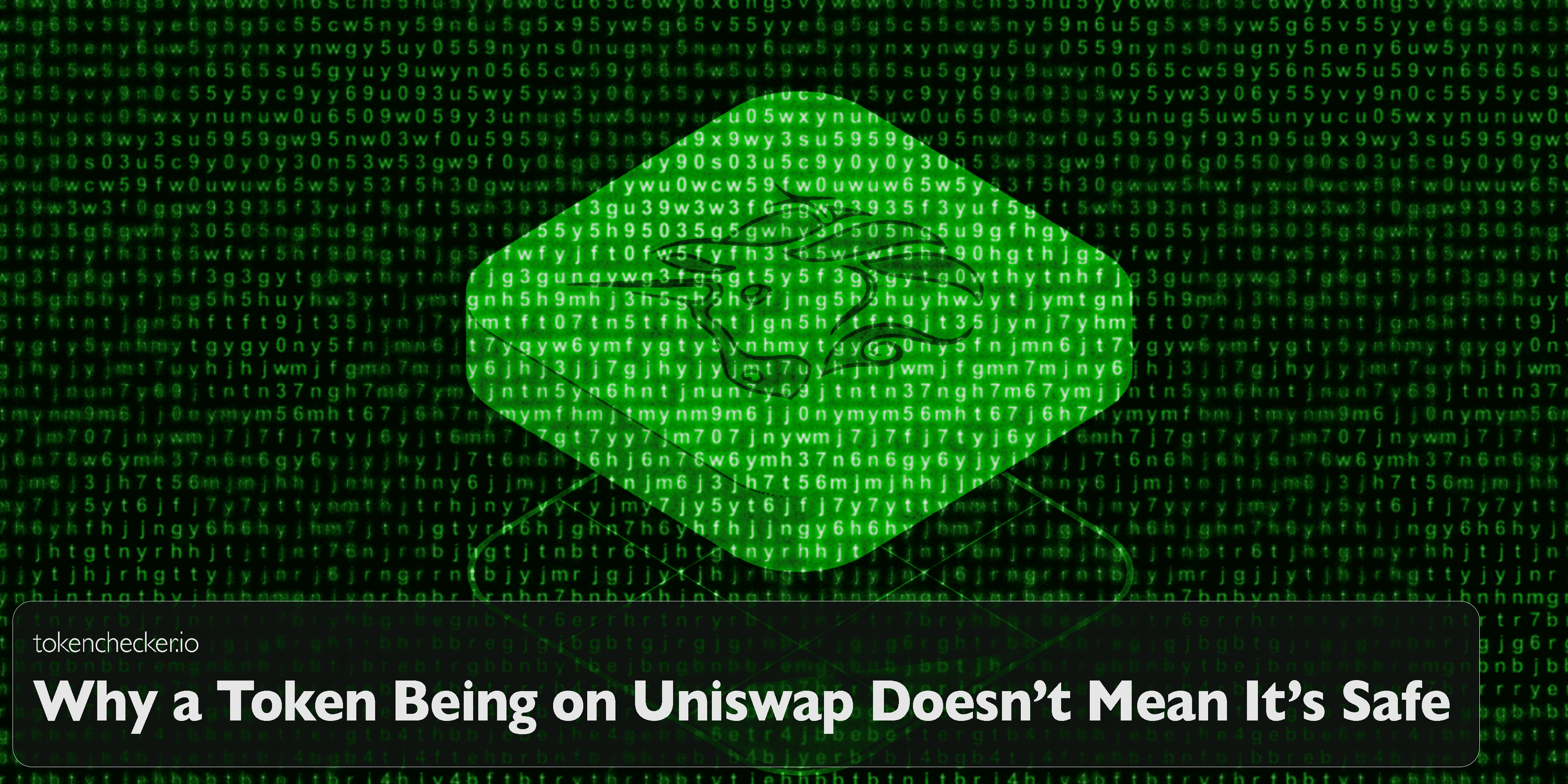
Why a Token Being on Uniswap Doesn’t Mean It’s Safe
Introduction
Uniswap is one of the most trusted platforms in DeFi. It’s fast. It’s decentralized. It’s permissionless.
But here’s where people get burned: they assume that because a token is on Uniswap, it must be legit. Like there’s some secret vetting process behind the scenes. There isn’t.
Anyone can create a token. Anyone can list it. And if you’re not careful, you’re just steps away from buying into a scam sitting right next to a top-100 project.
Let’s break down why Uniswap doesn’t equal safety and what to actually look for before trusting any new token.
Uniswap Is Trustless by Design That’s the Problem
Uniswap doesn’t pick which tokens get listed. There’s no application process. No review. No background check.
The moment someone creates a token and adds liquidity, it’s live. That’s the beauty of decentralized exchanges. But it’s also the risk.
Because that freedom gets abused fast.
Listing ≠ Vetting
Just because a token is listed doesn’t mean it’s been audited. It doesn’t mean the devs are legit. It doesn’t even mean the contract works properly.
In fact, some of the most notorious rug pulls start right here:
- Tokens with sell-only taxes so high you can’t escape
- Contracts that let the creator mint more tokens mid-pump
- Hidden functions that blacklist buyers after they ape in
- LP that looks locked but can be drained through backdoors
Uniswap won’t warn you about any of this. That’s on you.
Anyone Can Add Liquidity and Fake the Appearance of Safety
This is another trick: scammers will pair their token with ETH, add liquidity, and claim, “Look, we’re on Uniswap totally legit.”
They’ll even send themselves buys and sells to simulate activity. Some even create multiple tokens across different DEXs using the same scam playbook.
You might see a token with $50K in liquidity and 1,000 holders. But if you dig deeper? Half the volume is just the dev flipping tokens between wallets.
Uniswap’s Interface Doesn’t Show Contract Risk
If you use the Uniswap frontend, you won’t see:
- If the token is honeypotted
- If the contract has mint permissions
- If the owner wallet can change fees or blacklist addresses
- If liquidity is truly locked or just looks that way
This is where tools like tokenchecker.io matter. It scans the contract, wallet behavior, and risk flags that Uniswap doesn’t show. You get the truth before you make the trade.
How to Spot a Dangerous Token on Uniswap
Here’s what to check before you click “Swap”:
- Is the contract verified on Etherscan?
- Has ownership been renounced, or is it still under full control?
- Are there mint, blacklist, or tax functions?
- Who holds the top wallets? Are they all linked to the deployer?
- Is the liquidity truly locked and for how long?
If you can’t answer these in under two minutes, don’t buy. Or at least don’t buy yet.
Uniswap Is Secure. The Tokens? Not Always
This isn’t a knock on Uniswap. The platform works exactly as it should permissionless, decentralized, and transparent.
But what lives on it? That’s another story.
Scammers love Uniswap because it gives them instant legitimacy to people who don’t know better. “We’re live on Uniswap” sounds official. It isn’t.
Final Thoughts
Uniswap is a tool. Like any tool, it’s only as safe as the person using it.
Just because a token lives on Uniswap doesn’t mean it’s earned your trust. That’s where your research comes in.
Use tokenchecker.io to scan the contract, the wallets, and the liquidity. Because being tradable doesn’t mean being trustworthy.